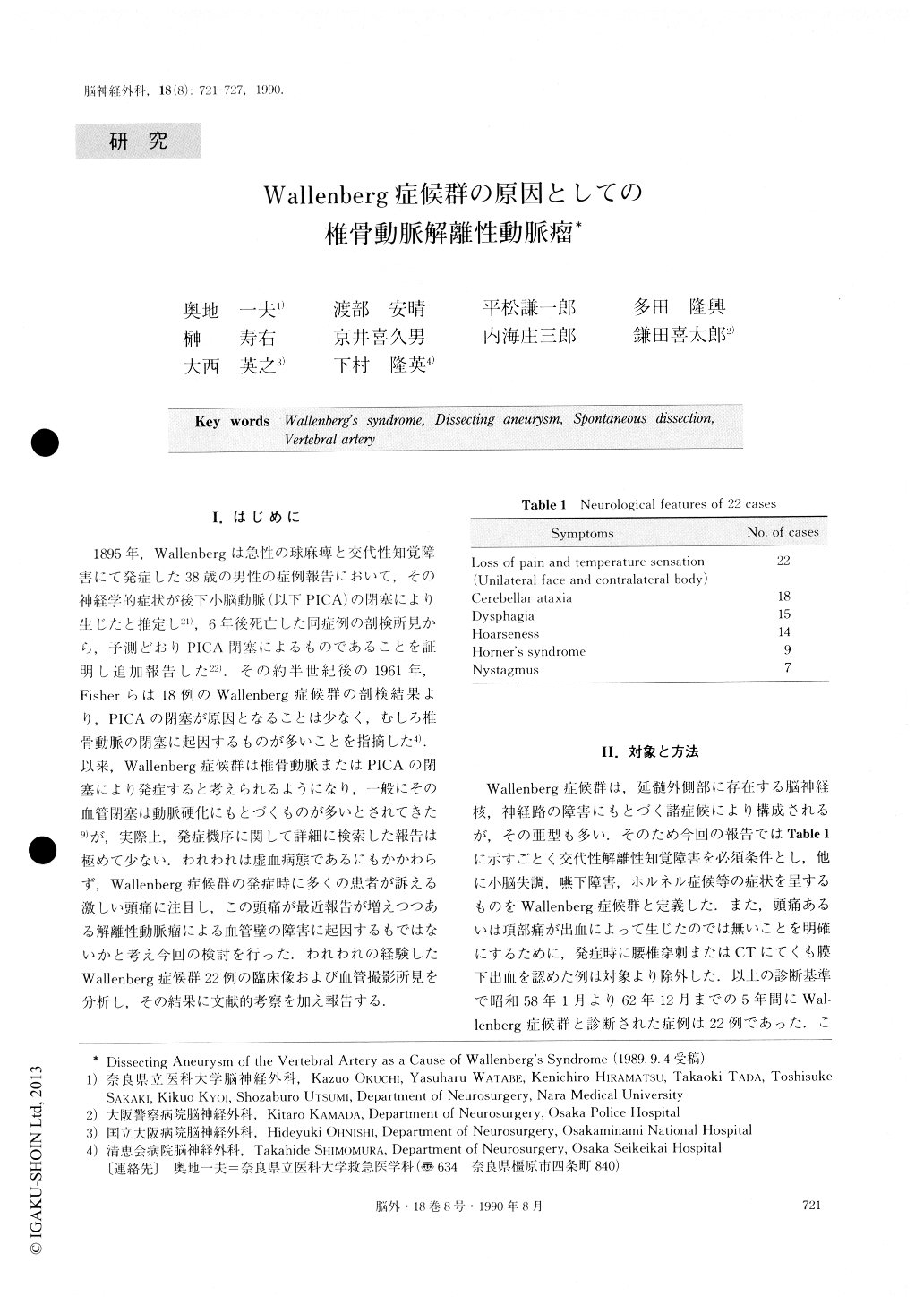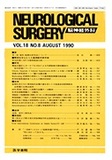Japanese
English
- 有料閲覧
- Abstract 文献概要
- 1ページ目 Look Inside
I.はじめに
1895年,Wallenbergは急性の球麻痺と交代性知覚障害にて発症した38歳の男性の症例報告において,その神経学的症状が後下小脳動脈(以下PICA)の閉塞により生じたと推定し21),6年後死亡した同症例の剖検所見から,予測どおりPICA閉塞によるものであることを証明し追加報告した22).その約半世紀後の1961年,Fisherらは18例のWallenberg症候群の剖検結果より,PICAの閉塞が原因となることは少なく,むしろ椎骨動脈の閉塞に起因するものが多いことを指摘した4).以来,Wallenberg症候群は椎骨動脈またはPICAの閉塞により発症すると考えられるようになり,一般にその血管閉塞は動脈硬化にもとづくものが多いとされてきた9)が,実際上,発症機序に関して詳細に検索した報告は極めて少ない.われわれは虚血病態であるにもかかわらず,Wallenberg症候群の発症時に多くの患者が訴える激しい頭痛に注目し,この頭痛が最近報告が増えつつある解離性動脈瘤による血管壁の障害に起因するもではないかと考え今回の検討を行った.われわれの経験したWallenberg症候群22例の臨床像および血管撮影所見を分析し,その結果に文献的考察を加え報告する.
Although it is well known that Wallenberg's syn-drome is caused by occlusion of the vertebral artery (VA) or the posterior inferior cerebellar artery (PICA) , the etiology of the occlusion is rarely documented. During the course of Wallenberg's syndrome, patients often complain of headache. We thought that these headaches might be caused by dissecting aneurysm (DA) of the vertebral artery, and so we studied the in-cidence of DA in our cases with Wallenberg's syn-drome.

Copyright © 1990, Igaku-Shoin Ltd. All rights reserved.


